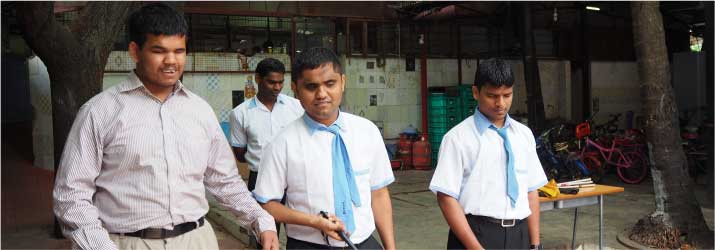The blind side…

AN OVERVIEW
Compared to the PWD Act, the current RPD Act strengthens the regulatory, monitoring, and grievance redressal mechanisms in terms of their functions and composition. It also stipulates designation of special court at the district level for fast tracking cases of persons with disabilities under the Act.
This document is a brief narrative with overview of the Rights of Persons with Disabilities Act, 2016 with a view to enabling corporates, social workers, human rights activists, rehabilitation professionals, academia, etc. to acquire an overall understanding of this important legislation so that they are able to do their bid in the matter of its implementation. The narrative also contains a segment that focuses on the role and obligations of the private sector.
RIGHTS OF PERSONS WITH DISABILITIES ACT, 2016
The Act replaces the Persons with Disabilities (Equal Opportunities, Protection of Rights and Full Participation) Act, 1995. It fulfills the obligations to the United National Convention on the Rights of Persons with Disabilities (UNCRPD), to which India is a signatory. The Act came into force during December 2016.
The types of disabilities have been increased from existing 7 to 21 and the Central Government will have the power to add more types of disabilities. Out of the 21 disabilities listed, few are: Blindness, Low-vision, Hearing Impairment (deaf and hard of hearing), Speech and Language disability, Multiple Disabilities including deaf blindness etc.
Persons with "benchmark disabilities" are defined as those certified to have at least 40 per cent of the disabilities specified in the list.
RIGHTS AND ENTITLEMENTS
Responsibility has been cast upon the appropriate governments to take effective measures to ensure that the persons with disabilities enjoy their rights equally with others.
Additional benefits such as reservation in higher education (not less than 5%), government jobs (not less than 4 %), reservation in allocation of land, poverty alleviation schemes (5% allotment) etc. have been provided for persons with benchmark disabilities and those with high support needs.
Every child with benchmark disability between the age group of 6 and 18 years shall have the right to free education.
Government funded educational institutions as well as the government recognized institutions will have to provide inclusive education to the children with disabilities.
For strengthening the Prime Minister's Accessible India Campaign, stress has been given to ensure accessibility in public buildings (both Government and private) in a prescribed time-frame.
Campaign
Devanahalli Building
Rakum School for Blind has been a Lifesaver for many below poverty blind children. Acting as helping hand, Rakum aims to provide quality education for these kids. The school which initially started in a small apartment in Bangalore has grown big managing three schools in Indiranagar, Devanahalli and Arkavathy Layout. With the pure intention of serving the needy, Rakum now is growing as a tree. R ...
Read MoreBlindathon
Want to be a part of soul pleasing and memorable Marathon, then mark the date 3 Dec 2017. Sri Rakum School for Blind, Indiranagar is organizing a walkathon called Blindathon in support of visually impaired Kids. The response and participation were overwhelming last year and is expected to be overcoming this time. Your small steps of kindness will make this 2Km walk, a successful proceeding. ...
Read More
